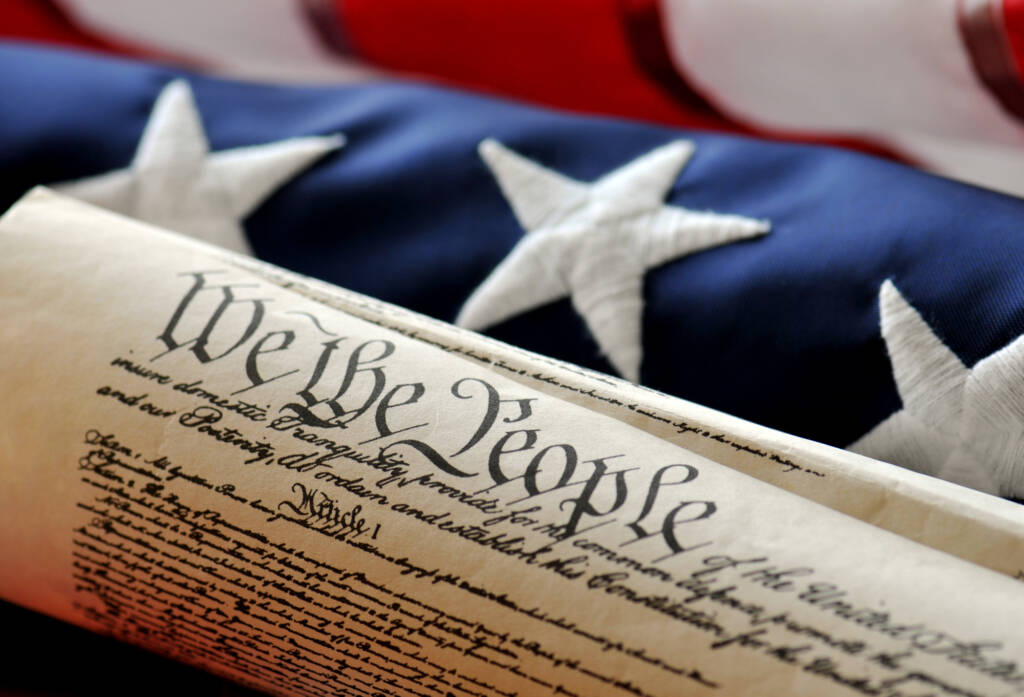
African American History

How have African Americans shaped the culture of the United States throughout history? Tracing the accomplishments and obstacles of African Americans from the slave trade through emancipation, and to the modern African diaspora, you will learn about the political, economic, social, religious, and cultural factors that have influenced African American life. In African American History, you’ll come face to face with individuals who changed the course of history and learn more about slavery, racism, and the Civil Rights Movement. You will also explore how the history of African Americans influences current events today.
Note: content varies depending on course version. For currently enrolled students, please refer to the syllabus located in the course information area for curriculum specifics.
Major Topics and Concepts
Segment 1:
- Africa
- Describe the eight major physical regions of Africa, as well as its relationship to the major bodies of water that surround it
- Recognize the scientific evidence of Africa as the cradle of civilization
- Explain the contributions and major characteristics of Egyptian society to Africa’s place as the origin of modern civilization
- Discuss how the West African kingdoms of Ghana and Mali established themselves and contributed to the economic and cultural development of the region
- Understand the development of the slave trade within Africa and the beginnings of the transatlantic slave trade
- Identify the steps of the transatlantic slave trade, including the triangular trade route, the involvement of local chiefs, the Middle Passage, and arrival in the Americas
- Slavery in America from Early Colonies to Independence
- Understand how slavery developed in the different geographic areas (Chesapeake, Lowcountry, and Northern colonies as well as Spanish Florida and French Louisiana)
- Identify how the Revolutionary activities happening in the colonies affected African Americans
- Discuss how Black Americans participated in the Revolutionary War and how that participation affected them
- Analyze how revolutionary ideals affected the anti-slavery movement
- Explain how slavery changed in the North and upper South states after the Revolutionary War
- Understand what factors contributed to the growth of slavery in the Deep South
- The Expansion of Slavery
- Describe the emergence of the cotton culture in the South, including how it fueled the economy of the United States
- Explain what a day in the life of a slave in the South was like, including the types of tasks slaves were assigned
- Understand the slave trade—how it was created, how it worked, the role of slave traders, and the family structures it was disrupting
- Analyze the environment in which free blacks were living, including where they settled and the difficulties they encountered
- Describe the role of black women in the abolitionist causes, as well as the three influential male abolitionists discussed in the unit
- African Americans and the Civil War
- Explain the four key factors that led the United States to civil war
- Describe Abraham Lincoln’s attitude toward slavery and emancipationand how that changed over the course of the 1860s
- Explain how the Fugitive Slave Laws, Underground Railroad, and the Dred Scott decision fueled the tension between the North and South about slavery
- Understand the role of black Americans in the Civil War
- Identify and explain the role of key African-American leaders and groups before and during the Civil War
- Freedom and Reconstruction
- Identify the ways that freed African Americans dealt with economic and social change, including employment and education
- Understand the role of the Freedmen’s Bureau in the Reconstruction period
- Explain the role of the black church in the creation of community and political leaders
- Describe the reaction of white Americans to the end of the war, including violence and black codes
- Analyze how Congress and President Johnson influenced Reconstruction through the Reconstruction Acts
- Explain how the Thirteenth and Fourteenth amendments affected the African-American community
- The Jim Crow Era
- Describe segregation and how the Plessy v. Ferguson decision contributed to it
- Explain the role that violence played in the lives of African Americans, including race riots and lynching, during this period
- Analyze the reasons behind the migration of African Americans to Africa, the western United States, and Southern cities, and the effects of that migration
- Understand the role of sharecropping and its consequences to African Americans
- Express how the justice system was applied to African Americans, especially in the South
- African Americans in the Early Twentieth Century
- Compare and contrast the two philosophies of African-American progress, represented by Booker T. Washington and W.E.B. DuBois
- Explain the role of African-American soldiers in the U.S. Armed Forces from the Civil War to World War I
- Describe the reasons behind the Great Migration
- Identify the reasons behind the race riots between 1906-1923
- Analyze the differences between the mission of the NAACP and the UNIA
- Explain the roots of the Harlem Renaissance and the Jazz Age and identify a few of the major artists associated with it
- Describe the reasons behind the resurrection of the Ku Klux Klan and the changes in the organization during the 1920s
- The Great Depression and World War II
- Explain some of the causes of the Great Depression and why African Americans were heavily impacted
- Describe the steps the NAACP took during the 1930s to challenge racial inequality in schools
- Analyze how President Franklin D. Roosevelt’s First New Deal affected African Americans
- Evaluate the role of First Lady Eleanor Roosevelt in the cause of racial justice
- Explain how the Second New Deal changed the United States and offered opportunities to African Americans
- Understand the state of segregation in the military at the beginning of World War II and what steps were taken during the war to integrate the military
- Protest and Struggle in the Civil Rights Era
- Explain how Brown vs. the Board of Education of Topeka, Kansas, changed the face of segregation
- Understand what nonviolent resistance is and how African Americans used it in the Montgomery Bus Boycott, including the role of Rosa Parks and Martin Luther King, Jr.
- Analyze the Little Rock desegregation challenge and how it reflected the white backlash to the progress of African Americans
- Describe a few of the grassroots efforts toward progress, including sit-ins, freedom rides, and the Student Nonviolent Coordinating Committee (SNCC)
- Discuss how the legal changes in the 1960s offered more opportunities for African Americans
- Analyze how the black power and black nationalism grew out of the civil rights movement and the reasons behind inner city violence during the late 1960s
- To the Present
- Trace the development of an increased political voice of African Americans from the local to the national level, including those who ran for president
- Identify how No Child Left Behind, the Welfare Reform Act, and affirmative action affects the lives of African Americans
- Analyze the ways in which African Americans have not yet reached economic equality with white Americans
- Explain how incarceration and police brutality continue to be an important issue in the African-American community and the nation at large
- Discuss the challenges and divisions exposed by the 2016 election, along with the protests and reactions that occurred afterward
Competencies
African Influence
Students will demonstrate an understanding of African influence by describing the geographical regions of the continent, summarizing contributions to the development of civilization, and describing the development of the Atlantic slave trade.
Slavery in the United States
Students will demonstrate an understanding of slavery in the United States by comparing the development of slavery in different geographic locations, explaining the influence of the revolutionary movement on Black Americans, and describing the factors that contributed to the growth of slavery in the South.
Expansion of Slavery
Students will demonstrate an understanding of the expansion of slavery in the United States by describing the influence of the cotton industry on the economy, explaining how the domestic slave trade developed in the United States, and comparing the daily lives of Black Americans.
The Civil War
Students will demonstrate an understanding of causes of the Civil War by summarizing the key factors leading up to the Civil War, describing the effects of anti-slavery efforts, and explaining the role of Black Americans throughout the Civil War era.
Reconstruction
Students will demonstrate an understanding of Reconstruction after the Civil War by summarizing the effects of the war, differentiating reactions to the end of the war, and explaining Reconstruction Acts and Amendments.
Jim Crow Era
Students will demonstrate an understanding of the Jim Crow era by describing segregation of the Jim Crow era, explaining the impacts on Black Americans, and summarizing the application of the justice system on Black Americans.
Early Twentieth Century
Students will demonstrate an understanding of the Post-Civil War Early Twentieth Century in the United States by explaining the contemporary philosophies of Black American culture, summarizing the civil unrest of the 1900s-1930s, and describing societal responses to the civil unrest.
The Great Depression and WWII (1930s thru 1945)
Students will demonstrate an understanding of the Great Depression and World War II by summarizing the effects of the Great Depression, summarizing the effects of World War II, and describing efforts to address racial justice.
Protests of the 1950s to Present
Students will demonstrate an understanding of the protests that took place from the 1950s onward by explaining the changing face of segregation, summarizing the challenges of resistance, and describing Black Nationalism.
Political Movement 1950s to Present
Students will demonstrate an understanding of political movements since the 1950s by explaining the involvement of Black Americans in political arenas, summarizing effects of laws implemented, and describing the obstacles still remaining.

